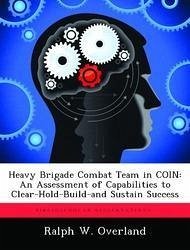
Assessment of Bridging Requirements and Current Bridging Capabilities for use of Legacy Heavy Forces Inside the Contemporary Operational Environment
Versandkostenfrei!
Versandfertig in über 4 Wochen
54,99 €
inkl. MwSt.

PAYBACK Punkte
27 °P sammeln!
In the context of increased need to deploy forces globally in support of the war on terror, the complex nature of terrain inside the operational environment demands an analysis of the ability of legacy forces to operate while deployed to diverse regions until replaced by objective force capabilities. The central research question is: Does the Army have the bridging capability to support the legacy, heavy force in the operational environment deployments likely to occur before the counter-attack corps is equipped with objective equipment? Comparative analysis is used. The operational environment...
In the context of increased need to deploy forces globally in support of the war on terror, the complex nature of terrain inside the operational environment demands an analysis of the ability of legacy forces to operate while deployed to diverse regions until replaced by objective force capabilities. The central research question is: Does the Army have the bridging capability to support the legacy, heavy force in the operational environment deployments likely to occur before the counter-attack corps is equipped with objective equipment? Comparative analysis is used. The operational environment is summarized by a numeric analysis of bridging requirements using a set of reasoned parameters. The bridging capability of current force structure is analyzed via the army domains yielding a detailed understanding of what force capabilities are available. A comparative analysis completes the study wherein the demands of the environment are compared to the current capabilities of the force. The answer to the central research question is: No, the Army does not have the bridging capability to support the legacy, heavy force in deployments in the near future. This conclusion is followed by a set of recommendations for action inside the Army domains as well as areas for future study.












